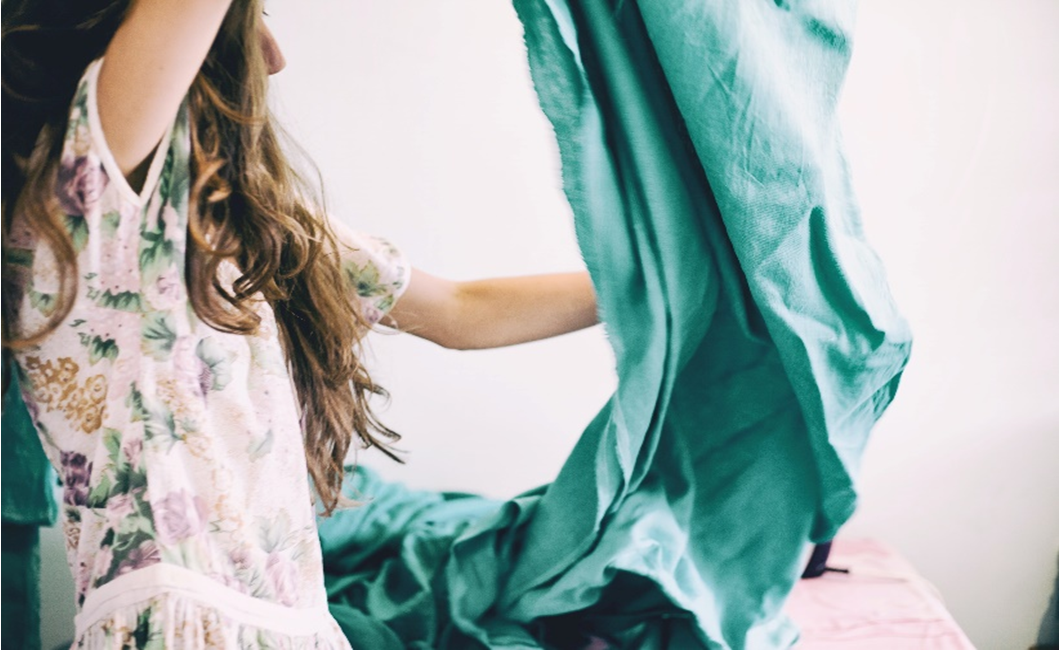Curtains can be manufactured out of a number of fabric options, depending on your needs. Despite the fact that Before cleaning at home, always examine the materials’ care and maintenance labels to be sure you’re doing everything correctly. Dark colors should be washed separately to avoid bleeding and blotting the lighter tints. Washing all of your curtains and draperies at once might be a difficult process; instead, clean them in batches by room over a period of time.
There are many different types of window treatments available today, curtains and drapes are still the most popular among homeowners. Cleaning the curtains, on the other hand, can be a time-consuming process, and the procedure differs depending on the fabric option. This article describes how to clean and maintain various types of curtains based on the fabric option they are made of.
Fabrics for Curtains and How to Care for Them
The materials listed below are common drapery and range of fabrics that require different cleaning methods.
Silk
Silk is a lustrous fabric option that can be washed. However, embroideries can tighten and shrink when washed, and the colors may bleed depending on the type of threads used. If the silk can be hand-washed, use a gentle baby shampoo and warm or cold water to clean it. Instead of tumble drying silk curtains, roll them up in a towel to absorb excess moisture and hang them to dry.
Cotton
Because of its versatility and comfort, this is a popular choice among homeowners. You can choose from a variety of blends and 100% cotton drapes. If you have pure cotton curtains, keep in mind that this natural fabric shrinks unless it is processed and preshrunk. In the event of materials that have not been preshrunk, use cold water. Warm water can be used for lighter colors and cold water can be used for colors that are likely to fade in other settings. Don’t overdry the material, as this can cause shrinking.
Velvet
Velvet drapes give a royal and refined appearance. They’re a thick, opaque cloth that’s perfect for blackout draperies. If you have unlined velvet curtains, wash them in cold water on gentle cycle with half the amount of detergent you normally use. Perform a color fastness test on the drapes before putting them in the washing machine. If the color transfer occurs, dab a small area with a damp towel and dry clean. Also, make sure that the freshly washed curtains are laid flat on a surface to dry naturally rather than in the dryer.
Linen
Linen is another popular lightweight natural fabric for curtain manufacturing. Linen can be machine washed unless the cleaning instructions expressly state that it must be professionally dry-cleaned. When cleaning, use cold water and keep in mind that linen absorbs more water than other fabric options, thus the water proportion should be adjusted accordingly. For the best results, air dry the fabric and iron it on the backside to keep the color.
Lace
Lace is more pleasing to the eye than it is practical. When wet, it is prone to wrinkling and snagging. Dust and pet hairs can be dislodged by shaking the curtains outside. Wash each panel by gently spinning it in a soap water solution made from lukewarm water and a spoonful of detergent liquid. Drain the soapy water, then wash the panel in cold water to remove any soap residue before hanging the curtains to dry.
How Often Should Curtains Be Cleaned?
The frequency with which the curtains should be washed and maintained is determined by the type of fabric option used. While dust and grime cling to some materials, others are considerably smoother and less likely to become soiled.
Weekly – Give your curtains a thorough shake during weekly home cleanings, regardless of the fabric option, to expel any loose dust. Proceed to cleaning your home and furniture after that. This will prevent the dust from settling into the cloth and making it tough to remove afterwards.
Monthly – Vacuum the fabrics once a month, paying special attention to the top half of the curtains, where dust tends to build the most. When vacuuming, avoid using teethed attachments that could snag and rip the cloth.
Periodically – It can be once every four months or once every six months, but depending on the type of fabric, having the curtains dry cleaned by a professional is recommended to extend the product’s life and keep it looking new.
Important Factors to Consider
When cleaning the curtains, take into account the following factors:
- Choosing curtain fabric option can be a difficult undertaking, especially when you have to consider the work required to clean it. Knowing the fundamental cleaning methods for various materials can help you make a more informed decision at the window covering store.
- Consider the lining fabric option as well, as the wash and care instructions for the lining may differ from those for the main fabric.
- Before cleaning at home, always examine the materials’ care and maintenance labels to be sure you’re doing everything correctly.
- Dark colors should be washed separately to avoid bleeding and blotting the lighter tints.
- Washing all of your curtains and draperies at once might be a difficult process; instead, clean them in batches by room over a period of time.




